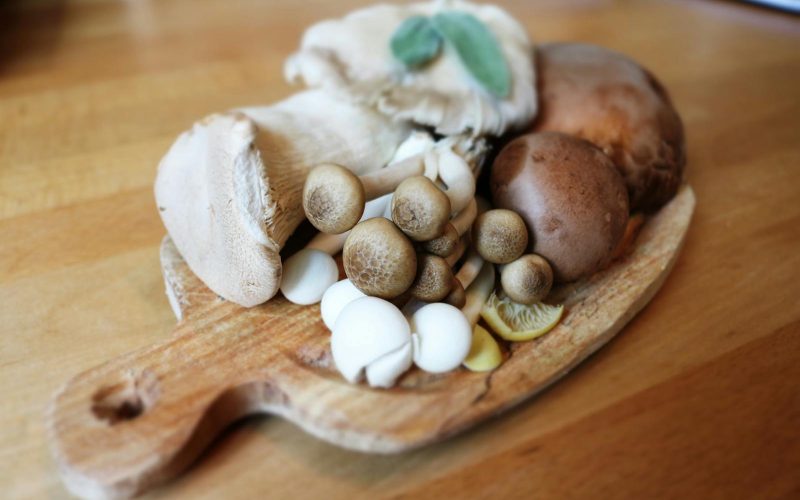There’s a fungus among us! Do you know what signs a nasty fungus can cause?
How can you tell if mushrooms are bad? Please read this to learn what’s truly lurking behind your refrigerator.
Stay safe from eating decaying mushrooms that could make you sick.
Before then, let’s think about ways to monitor shelf life before they go bad.
How to Monitor the Shelf Life?
You can store mushrooms, such as white, cremini, and portobello, in the refrigerator for up to a week.
Conversely, when the mushrooms were left on the grocery store shelf dictates safe storage durations.
Mushrooms in the store for several days may deteriorate in as little as one or two days.
For best results, purchase the freshest mushrooms you can locate and use them within three to four days. You can keep sliced mushrooms in storage for up to seven days.
Despite their ease, fresh mushrooms sliced can deteriorate up to twice as quickly as whole mushrooms.
So, if you want them to last longer, purchase entire mushrooms instead of presliced bundles.
Lastly, cooked mushrooms should be thrown out after three or four days.
Most cooked foods, including meat, fish, vegetables, and mushrooms, can be refrigerated for up to four days. After that, freeze the mushrooms or discard them.
And while it might just be easier to buy dried mushrooms and reconstitute them, you should know what to look for when mushrooms go bad — especially if you don’t want to get sick accidentally.
How to Tell if Mushrooms Are Bad?
Some of the simplest methods to check for when looking for how to tell if your fresh mushrooms are bad is to:
1. Look at the Expiration Date on the Container
If you’ve checked the expiration date, it’s probably time to discard that baby Bella container.
If your mushrooms have no expiration date, you can use the day you brought them home from the supermarket. Fresh mushrooms will last five to seven days in the refrigerator.
Put them in a paper bag instead of plastic wrap to prolong their freshness.
Even though pre-sliced mushrooms are incredibly convenient, they won’t last as long in your refrigerator as whole mushrooms.
Spruce Eats also suggests storing mushrooms in the main part of your fridge rather than in the vegetable crisper, where there is too much moisture.
2. Check for Shriveling and Wrinkles
Rough edges and patches of dryness are the next telltale symptoms that your mushrooms are about to spoil.
If they are beginning to dry up and are not discolored, slimy, or odorous, use them immediately.
3. Check for Bruises in the Brown Areas of the Skin
Avoid eating mushrooms that have imperfections on them. Discoloration is rarely a reliable sign.
Regarding food safety, brown or black patches and bruises are signs that your mushrooms are getting bad.
Throw your mushrooms in the trash if they have black stains on them.
4. Slimy Texture
This normally occurs after the mushrooms have been refrigerated for an extended time, although they are usually safe to consume at this point as well.
It’s just less flavorful, and most people throw them out now. We won’t blame you for not wanting to eat a slimy mushroom!
Furthermore, mushrooms that appear dark overall or have dark patches have probably gone bad. Past their prime, mushrooms can also begin to wrinkle.
A few slightly dried-out mushrooms might be fine if you’re determined not to waste food.
It’s best to be safe than sorry when it comes to food safety, so throw out the fungus if every mushroom in the packet has dried.
5. Odor
Your sense of smell is an additional useful sign. Are you able to smell it? The scent. Sort of putrid odor.”
In general, mushrooms don’t smell particularly strong, but if you put your nose to the package, you could smell something.
But if the mushrooms give off a powerful, noticeable odor the second you open the package or the fridge, it’s time to toss them.
It’s important to remember that different kinds of mushrooms have varying life spans. According to Greatist, white button mushrooms will rot more quickly than cremini or portobello mushrooms.
Therefore, if you know you won’t use those fresh mushrooms immediately at the supermarket, bear that in mind.
If you return home and find you won’t be able to use them in time, you can freeze fresh mushrooms for up to a year.
Exercise Caution
Learning how to tell if mushrooms are bad is very important. Suppose you believe you may have eaten a mushroom past its prime.
In that case, The CDC (Centers for Disease Control and Infection) recommends visiting a doctor if you have a high temperature or frequently vomit, even if it won’t be a major concern.
Store-bought mushrooms can cause mushroom poisoning. But if you consume mushrooms that are well past their peak, you may have nausea or upset stomach.
Additional indications of food poisoning include diarrhea and dehydration.
Therefore, try to preserve and use them appropriately before they become too old.
This will maximize your mushrooms’ nutritional content while ensuring your family’s and your safety.
To put it briefly, it’s not worth the risk if you’re unsure if those mushrooms or any other vegetables that appear to be wilted are still edible.








